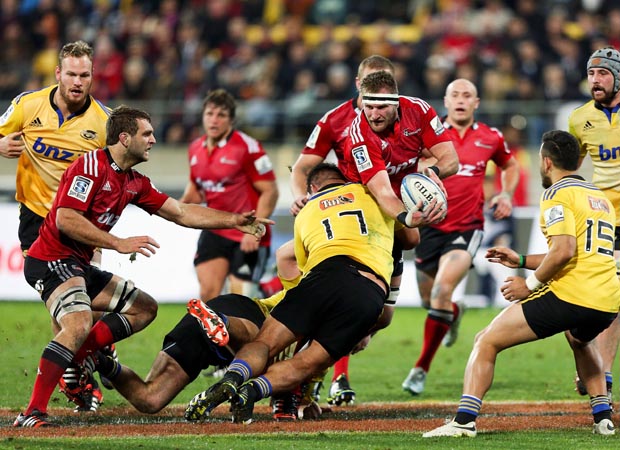 Reflecting on the latest Test series made me realise that the one major difference between the big three Southern Hemisphere teams and ours is precision under pressure.
Reflecting on the latest Test series made me realise that the one major difference between the big three Southern Hemisphere teams and ours is precision under pressure.
Size is not an issue, in fact most of our teams have one or two physically bigger players than the SANZAR opposition and the rest of the players are more or less a similar size.
It’s the speed and precision of the hand-eye co-ordination of SANZAR players under the intense pressure of international rugby that is the major difference, particularly in the final plays of a game.
That’s a skill that can only be the result of playing in a more intense game environment on a regular basis as reactions are instinctive and thus improve through constant use.
Top players will have better reactions than most ordinary players but it is only by playing in highly competitive games that those skills are honed and improved.
The week-to-week games played in Super Rugby must be significantly more intense than our Premiership, the Top14, or Pro12, which would seem pretty obvious when you stop to think about it.
The Premiership and Top 14 are basically played between the best clubs in either England or France, whereas Super Rugby is made up from the best Region/Provinces from three of the world’s best rugby playing nations.
Although the Premiership and Top 14 can justifiably call themselves the best club leagues in the world, club teams are seldom as good as regional/provincial teams, simply because regions are generally made up of the best players from a number of clubs.
Admittedly, some clubs can equal the standard of regional teams but only those with owners prepared to continually invest in new players who reach the top of their game.
That said, those owner clubs create more problems, as they make a mockery of the league system by buying in proven internationals (past or present) to gain success.
This in turn forces the other clubs with enough money to buy in talent in an attempt to compete, which splits the leagues into two camps, the ‘Haves’ who will generally compete at the top of the table and the ‘Have Nots’ who are constantly fighting relegation.
The disparity in quality of those teams enables players to coast through games winning without having to put in any real effort and so makes them, in a sense, lazy.
Those at the bottom of the league table will target specific games that they feel they have a better chance of winning and rest players.
All in all, that means that around half the league games in a season are not truly competitive in terms of both clubs having an equal chance of winning.
The RABO may have the same make-up as Super Rugby but the standard of the countries within that league are very different with just Wales and Ireland currently with enough clubs to be able to select a worthwhile number of regional teams who are able to compete.
The weekly challenge faced by Super Rugby players in more competitive matches improves reactions and tactical team work awareness, making them more precise and able to complete complicated moves when fatigued in those crucial last minute plays.
It may be that the new Rugby Championship in Europe will raise the level of competition and help to improve player development but at the moment that competition is second to the Premiership and Top14.
The bullyboy tactics of the Premiership and Top 14 where the clubs with the biggest budgets can buy the biggest squad of internationals from all over the world to keep them at the top of the leagues may work, but that doesn’t help the international teams of France and England.
In fact it is a mirror image of the situation that football has faced over the years where the club game goes from strength to strength but, despite that comparative strength, the England national football team are unable to produce similar results on the world stage.
I recently took part in a lecture at Birkbeck University in London on the mistakes made in football and how professional rugby had not learned from them, in terms of finance and governance of the sport.
The debate focused around how professional rugby (PRL) has structured itself along the same lines as the football Premiership but has not taken notice of the many mistakes that have been made over the years.
With the number of foreign players in key playing positions, wages levels against revenues, player development and player welfare etc., these are all issues that football has had to manage and is still managing – and now the same is being faced by rugby.
To achieve the club dominance of football would seem to be the Holy Grail of the Premiership and Top 14, but if like football the national team suffers, rugby is not a big enough sport to survive and flourish.
Retaining players in rugby is difficult enough with a drop-out rate of around 80 per cent from junior and mini to the senior game. Without the magnetic attraction that a successful national team brings it could be even worse.
*This article was first published in The Rugby Paper on June 29.























